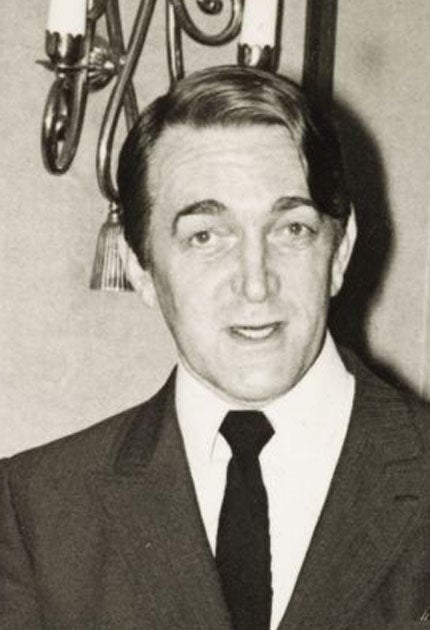Denis Wirth-Miller: Bohemian artist who enjoyed a close association with Francis Bacon

Denis Wirth-Miller was one of a group of artists who for many years injected the spirit of bohemia into the life of Wivenhoe, a small shipbuilding and repairing town on the Essex coast. The jollifications of Wirth-Miller, his partner, the James Bond illustrator Richard "Dickie" Chopping, and the painter Francis Bacon remain the stuff of local legend.
Such stories, true or untrue – among the latter is one that after Bacon's death his former Wivenhoe house was kept as a shrine by Denis and Dickie – have tended to overshadow Wirth-Miller's achievements as a painter. One recognition of this will be a forthcoming small retrospective at the Minories Art Gallery, Colchester.
Also undermining Wirth-Miller's reputation was the fact that from the early 1970s sight problems hindered him and that latterly he suffered from dementia. All this must have been hard for a man who had shown in London's leading galleries and had work in the collections of the Queen, the Arts Council and Contemporary Art Society.
Wirth-Miller was born in Folkestone, Kent, in 1915, where his Bavarian father Johann Wirthmiller (Denis later Anglicised his name) ran a busy hotel. Wirth-Miller's mother moved him to Bamburgh in her home county of Northumberland, where he was raised by his grandmother.
After school, he joined Tootal Broadhurst Lee, the textile manufacturers in Manchester, where innate talent prompted his appointment as a designer. After arriving in London early in 1937 he met Dickie Chopping, who moved into one of the painter Walter Sickert's former studios in north London, where Denis was living. Thus began a lifelong relationship; in December 2005 they became the first in Colchester to make a civil partnership.
It was not without disagreements, even how about they first met – according to Chopping at a Regent's Park charity garden party, according to Wirth-Miller at the Café Royal, a celebrated meeting point for gay men. A friend was concerned about the vulnerability of the Sickert flat to bomb damage and advised them to leave London, lending them the dilapidated Felix Hall in Kelvedon, Essex. There, they scraped a living gardening and other jobs.
Then, importantly, they met the painters Cedric Morris and Arthur Lett-Haines, who had established the East Anglian School of Painting and Drawing, first at Dedham and, when that was destroyed by fire, at Benton End. The artist Mollie Russell-Smith recalled how, as a student lacking an easel, with trepidation she knocked on the door at Benton End and it was "flung open by three young men" – Chopping, Wirth-Miller and Lucian Freud. "They bundled me in, assuming that I had come to be a student, and Dickie showed me all over the house with great enthusiasm and charm. I was enchanted."
Benton End was an artistic Eden. Wirth-Miller must have absorbed much from Morris, artistically and as a plantsman. Later, in Wivenhoe, Wirth-Miller tended a walled garden producing magnificent vegetables. Their house on Wivenhoe Quay, then used as a sail storehouse, was bought in 1944, but wartime restrictions prevented their moving in until 1945, when they began converting it back to its original role as a merchant's house.
By the late 1940s Bacon was visiting Wirth-Miller and Chopping. The friendship between Bacon and Wirth-Miller had been instigated earlier in the decade by the two Scots painters Robert Colquhoun and Robert MacBryde, whom Wirth-Miller had known in his Soho days. For years, Bacon had a home and studio in Wivenhoe which eventually Wirth-Miller bought from him.
Wirth-Miller, Chopping and Bacon were close, holidaying abroad. "Denis had a deep intellectual friendshipwith Francis," says Daniel Chapman, a close friend for many years. "Their interests in literature, philosophy, art, gambling and life in general were coincidental and were live and vibrant up to each of their dying days." For most of the last 20 years Wirth-Miller and Bacon would hold extensive telephone conversations daily.
Wivenhoe’s artistic social life was boosted in when the journalist and local resident George Gale invited the politician Edward Heath to open a Wivenhoe Arts Club, which attracted painters and writers and had its own gallery. It was not so significant in the lives of Wirth-Miller and Chopping, insists Chapman, as Denis’s assisting others such as the primitive painter Ernie Turner to develop his talent.
Known as “Wivenhoe’s Alfred|Wallis” – after the St Ives Cornish primitive – Turner began painting in 1964 when he retired as a shipwright. Wirth-Miller helped him with technical advice, encouraged him to experiment and fostered his sales in London and to overseas clients. Turner became so popular that clients had to order paintings.
Cultivating his friendships at home and abroad and partying hard were strong Wirth-Miller traits. A former near-neighbour of Bacon's cottage and studio in Wivenhoe remembers the "outrageous" reputation he, Wirth-Miller and Chopping had. "They frequented local pubs and restaurants, sometimes to the owners' dismay. At one time I lived above and worked in the restaurant the trio frequented.
"On those occasions the proprietor used to hide the bottles of champagne so there would not be all-night sessions. I heard tales of Wirth-Miller and Bacon having drunken painting sessions, painting on each others' canvases."
In contrast, Chapman recalls Wirth-Miller as a serious worker. When materials were in short supply during the war, like others he would resort to house paint and enamels.
After the war years his work was in oil on a large scale. "Early works were portraits, figures and still life," Chapman said, "later a series of very large dog paintings – hounds on the move, mastiffs, great danes in motion in the act of turning or hunting or disappearing into the mist. Later works were East Anglian or Dartmoor landscapes. He was always drawing in secret, often hands and feet."
Denis Wirth-Miller, artist: born Folkestone, Kent 27 November 1915; died Colchester, Essex 27 October 2010.
Join our commenting forum
Join thought-provoking conversations, follow other Independent readers and see their replies
Comments